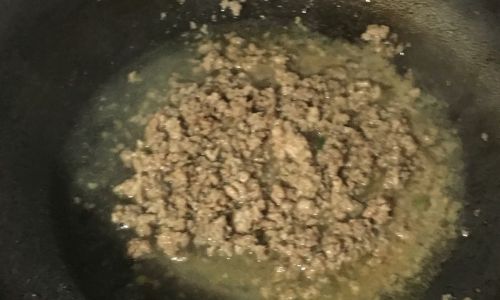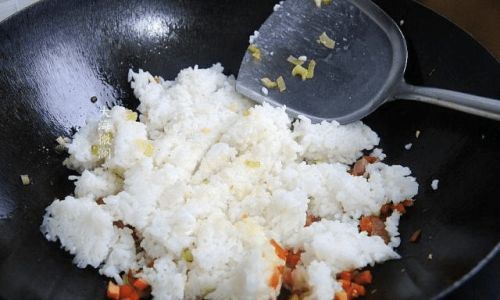Fried rice, a dish beloved worldwide for its simplicity, versatility, and ability to transform leftovers into a satisfying meal, is a cornerstone of many cuisines. Whether you’re a busy parent, a college student, or a home cook looking for a quick dinner solution, mastering the art of fried rice can save time, reduce food waste, and delight your taste buds. This article will guide you through the process of creating restaurant-quality fried rice at home, focusing on techniques, ingredients, and tips to ensure your dish is both flavorful and effortless to prepare.
The Foundation: Choosing the Right Rice
The success of any fried rice dish begins with the rice itself. While it might be tempting to use freshly cooked rice, the key to achieving the perfect texture lies in using day-old rice. Fresh rice contains excess moisture, which can lead to a mushy, clumpy final product. Day-old rice, stored in the refrigerator, dries out slightly, allowing it to absorb flavors and separate easily during cooking.
Best Rice Varieties:

- Long-grain jasmine rice: Fragrant and slightly sticky, it holds its shape well.
- Basmati rice: Light and fluffy, with a nutty aroma.
- Medium-grain Calrose rice: A popular choice in Asian cuisine, offering a balanced texture.
Pro Tip: If you forget to prepare rice in advance, spread freshly cooked rice on a baking sheet and let it cool uncovered in the refrigerator for 1–2 hours. This speeds up the drying process.
Essential Ingredients for Flavor
Fried rice’s beauty lies in its adaptability. You can customize it with proteins, vegetables, and aromatics to suit your preferences. However, certain ingredients are non-negotiable for authentic flavor:
-
Aromatics:
- Garlic and ginger: Mince or grate them finely to release their pungent oils.
- Shallots or onions: Add a mild sweetness and crunch.
-
Proteins:
- Eggs: Scrambled and mixed into the rice for richness.
- Shrimp, chicken, or pork: Marinate in soy sauce, sesame oil, and a pinch of sugar for depth.
- Tofu: For a vegetarian option, use firm tofu pressed to remove excess moisture.
-
Vegetables:
- Carrots, peas, and corn: Classic choices for sweetness and color.
- Bell peppers, broccoli, or mushrooms: Add texture and nutrients.
- Frozen vegetables: A convenient shortcut—no need to thaw!
-
Seasonings:
- Soy sauce: Use low-sodium for better control over saltiness.
- Oyster sauce: For umami-rich flavor (optional but highly recommended).
- Sesame oil: A drizzle at the end adds nutty aroma.
- White pepper: A pinch enhances savory notes without overpowering.
Cooking Techniques for Perfect Fried Rice
Achieving wok hei—the smoky, charred flavor associated with stir-fried dishes—requires high heat and quick movements. While a wok is ideal, a large skillet or cast-iron pan works well too.
Step 1: Prep Like a Pro
- Mise en place: Chop all ingredients before heating the pan. Fried rice cooks rapidly, so there’s no time to pause midway.
- Crack eggs into a bowl: Whisk lightly with a pinch of salt.
- Marinate proteins: Toss meat or tofu in soy sauce, cornstarch (for tenderizing), and a splash of oil.
Step 2: Master the Heat

- High heat is non-negotiable: Preheat your pan until it’s almost smoking. This ensures ingredients sear rather than steam.
- Use the right oil: Vegetable, peanut, or canola oil have high smoke points. Avoid olive oil, which can burn.
Step 3: Stir-Fry with Confidence
- Cook in batches: Overcrowding the pan lowers the temperature and causes steaming. Fry proteins first, then set them aside.
- Scramble eggs separately: Pour beaten eggs into the hot pan and scramble until just set. Remove and reserve.
- Sauté aromatics: Stir-fry garlic, ginger, and onions until fragrant but not browned.
Step 4: Combine and Season
- Add vegetables: Toss in heartier veggies like carrots first, followed by quicker-cooking ones like peas.
- Introduce the rice: Break up any clumps with your spatula. Spread the rice evenly across the pan to ensure even heating.
- Season judiciously: Drizzle soy sauce around the edges of the pan (not directly on the rice) to caramelize and distribute flavor.
Step 5: Finish with Flair
- Reintroduce proteins and eggs: Fold them gently into the rice to avoid overmixing.
- Add final touches: A splash of sesame oil, a sprinkle of chopped green onions, and a garnish of cilantro elevate the dish.
Common Mistakes to Avoid
- Using wet rice: As mentioned, day-old rice is crucial. If using fresh rice, pat it dry with paper towels.
- Overcrowding the pan: Cook in batches to maintain high heat.
- Under-seasoning: Taste and adjust seasonings as you go. Fried rice should be boldly flavored.
- Overcooking vegetables: They should retain a slight crunch.
- Skipping the sesame oil: Its nutty finish ties the dish together.
Creative Variations to Try
Fried rice is a blank canvas—experiment with these ideas:
- Kimchi fried rice: Mix in fermented kimchi and a fried egg for a spicy, tangy twist.
- Thai basil fried rice: Add Thai basil, chili, and ground pork for a fragrant, aromatic dish.
- Pineapple fried rice: Toss in diced pineapple, cashews, and curry powder for a sweet-savory profile.
- Vegetarian fried rice: Use edamame, shredded cabbage, and tofu for a plant-based meal.
Serving Suggestions
Fried rice pairs beautifully with:
- Grilled proteins: Serve alongside teriyaki salmon or honey-soy chicken.
- Soups: A bowl of miso or egg drop soup balances the meal.
- Appetizers: Pair with spring rolls or dumplings for a feast.
The Secret to Restaurant-Quality Results
Ever wondered why restaurant fried rice tastes so good? It’s all about wok hei and balance. The intense heat of a commercial wok caramelizes the ingredients, creating a unique smokiness. At home, you can mimic this by:
- Using a carbon-steel wok: It retains heat better than nonstick pans.
- Not stirring too frequently: Allow ingredients to sear slightly before tossing.
- Adjusting seasoning at the end: Add a final splash of soy sauce or a squeeze of lime juice to brighten flavors.
Troubleshooting Guide
- Mushy rice: Next time, use drier rice or increase the heat to evaporate excess moisture.
- Bland flavor: Amplify seasonings gradually. Add a touch of MSG (if you’re comfortable) for umami.
- Burnt garlic: Lower the heat when sautéing aromatics.
- Uneven cooking: Ensure your pan is preheated adequately before adding ingredients.
Conclusion
Fried rice is more than a leftover makeover—it’s a celebration of simplicity and flavor. By mastering the basics of rice preparation, heat control, and seasoning, you can create a dish that rivals any takeout. Whether you stick to the classics or venture into creative variations, the key is to cook with confidence and adapt the recipe to your tastes. So grab your wok, gather your ingredients, and embark on a culinary adventure that turns humble rice into a meal to remember.
With practice, you’ll find that the best fried rice isn’t just about following a recipe—it’s about understanding the dance of heat, texture, and taste. Happy cooking!






0 comments